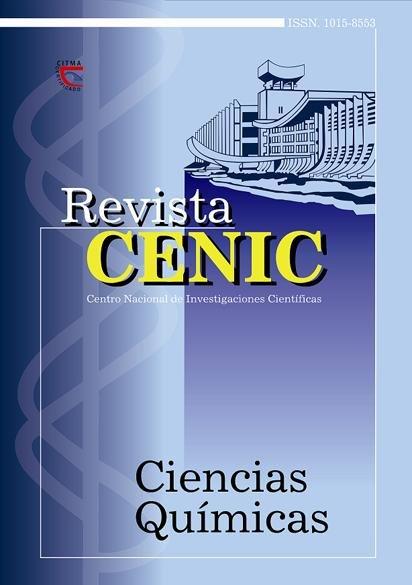Synthesis of 5-amino-pyrazol-4-N-[bis(metylthio)- methylene]carbohydrazide
Abstract
The synthesis of pyrazolic ring systems has been widely studied in the last years with the purpose of finding new molecules with potential biological activity. It has been certainly achieved since now a days, several medications contain this kind of structures as active principle. Between them, analgesics, antiinflammatories, and sedatives are to be emphasized. In this work, the synthesis of
new compounds of 5-aminopyrazolic structure by means of the reaction between the alkene and dithiethane push pull derived from N'-[bis(methylthio)methylene]-cyanoacethydrazide and appropriate dinucleophiles is reported. The best results were achieved by reaction of the alkene push pull N'-[bis(methylthio)methylene]-2-cyano-3,3-[bis(methylthio)]acrylhydrazide with hydrazine and hydrazide when an excess of the dinucleophiles was used (1:2.5). The intramolecular cyclization occurring in the reaction intermediate takes place without participation of the amidic carbonyl, which shows the greater reactivity of the cyano group regarding the NH attack. The results allow to verify the greater push pull character of the ethylene bond than the azometinic one for the reason that in the former the polarized bond will be more stabilized. It could be demonstrated in general, that the better yields were achieved by using the keten-S,S-acetals as electrophilic agents. The goal compounds could be obtained in just one step with higher yields than the reported for similar ring systems. The characterization of the products was carried out by means of elemental quantitative analysis and several spectroscopic methods: Infra Red and Nuclear Magnetic Resonance Spectroscopies and Mass Spectrometry.

Downloads
Published
How to Cite
Issue
Section
License
Copyright (c) 2002 Copyright (c) 2002 Revista CENIC Ciencias Químicas

This work is licensed under a Creative Commons Attribution-NonCommercial-ShareAlike 4.0 International License.
Los autores que publican en esta revista están de acuerdo con los siguientes términos:
Los autores conservan los derechos de autor y garantizan a la revista el derecho de ser la primera publicación del trabajo al igual que licenciado bajo una Creative Commons Atribución-NoComercial-CompartirIgual 4.0 que permite a otros compartir el trabajo con un reconocimiento de la autoría del trabajo y la publicación inicial en esta revista.
Los autores pueden establecer por separado acuerdos adicionales para la distribución no exclusiva de la versión de la obra publicada en la revista (por ejemplo, situarlo en un repositorio institucional o publicarlo en un libro), con un reconocimiento de su publicación inicial en esta revista.
Se permite y se anima a los autores a difundir sus trabajos electrónicamente (por ejemplo, en repositorios institucionales o en su propio sitio web) antes y durante el proceso de envío, ya que puede dar lugar a intercambios productivos, así como a una citación más temprana y mayor de los trabajos publicados (Véase The Effect of Open Access) (en inglés).













